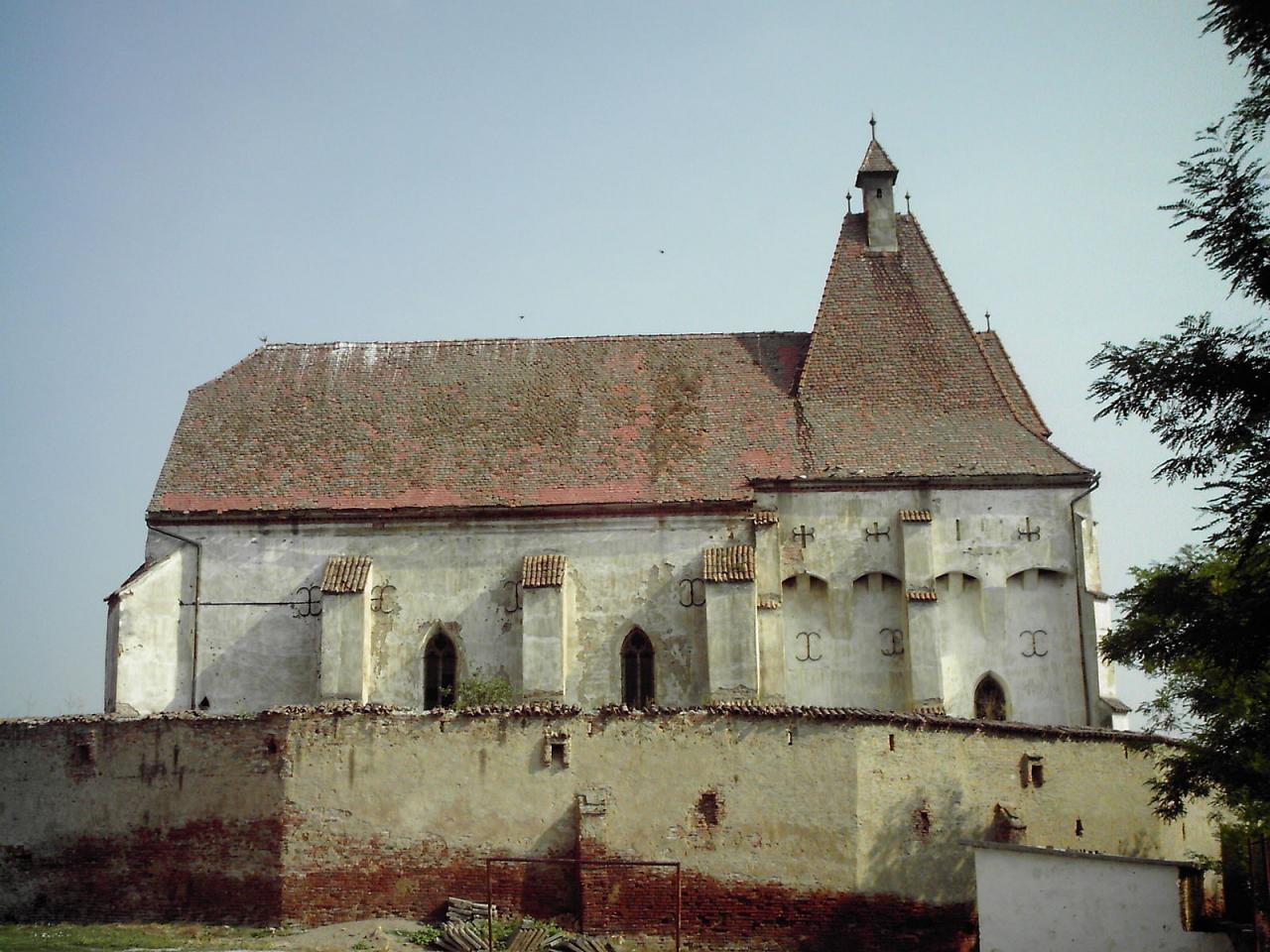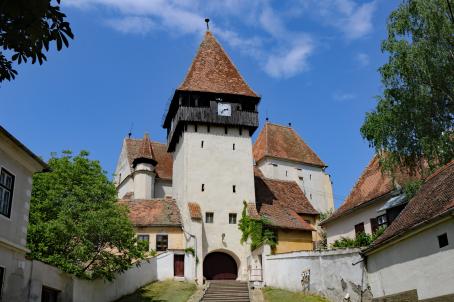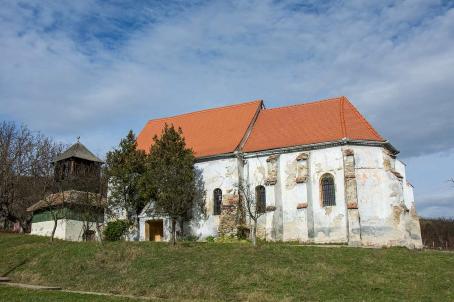Boian Fortified Church
The church in Boian was erected around the year 1400, but it is difficult to determine which parts of the initial construction have been preserved to this day. Nevertheless, it is known that around 1500 the religious edifice was fortified, a defence level being built above the chancel. The fortification wall was designed to include a parapet walk, partly built on two levels and strengthened by a gate tower. The latter also served as a bell tower having its entrance protected by a portcullis (sliding wooden lattice reinforced with iron). Another detail that is worth mentioning is the decoration of the cornice with angled bricks, a method often used for the Orthodox churches in Moldavia and Muntenia regions.
Furthermore, on both gate tower and northern entrance of the church one can find the coat of arms of the Moldavian prince Stephan the Great, to whose fief Boian briefly belonged.
About this building
For more information visit on this building visit https://kirchenburgen.org/en/location/bonnesdorf-boian/






